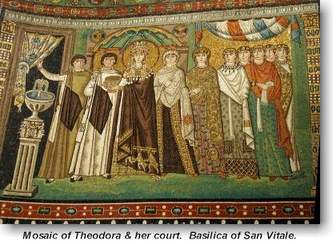What is a mosaic, and where were mosaics found in the Byzantine Empire?
1 Answer
Mosaics are an art form, wherein small stones, ceramic pieces, glassware and shells are fixed to a floor or wall.
Explanation:
Mosaics first appeared over 5,000 years ago in what is now Iraq. Craftsmen would take stones, small ceramic tiles, shards of glass, beads or shells and fix them to walls or floors as art or in decorative patterns.
As art, Mosaics really came into their own in Classical Greece and Rome, and remained common throughout the Mediterranean World and the Middle East.
Byzantine Artists may have taken the art form to its greatest expression. The old Roman city of Ravenna near where the Po River meets the Adriatic, is a UNESCO heritage site, largely because of the many mosaics that have survived there, some of which are over 1,800 years old.
The Church of San Vitale in Ravenna is famous for its extensive Mosaic, featuring many themes from the bible. The gold-coloured tiles used for the background give the church's interior a magnificent lustre that few cameras are able to capture. The portrait of the Byzantine emperor Justinian and his wife Theodora are a part of the mosaic and are quite famous.

